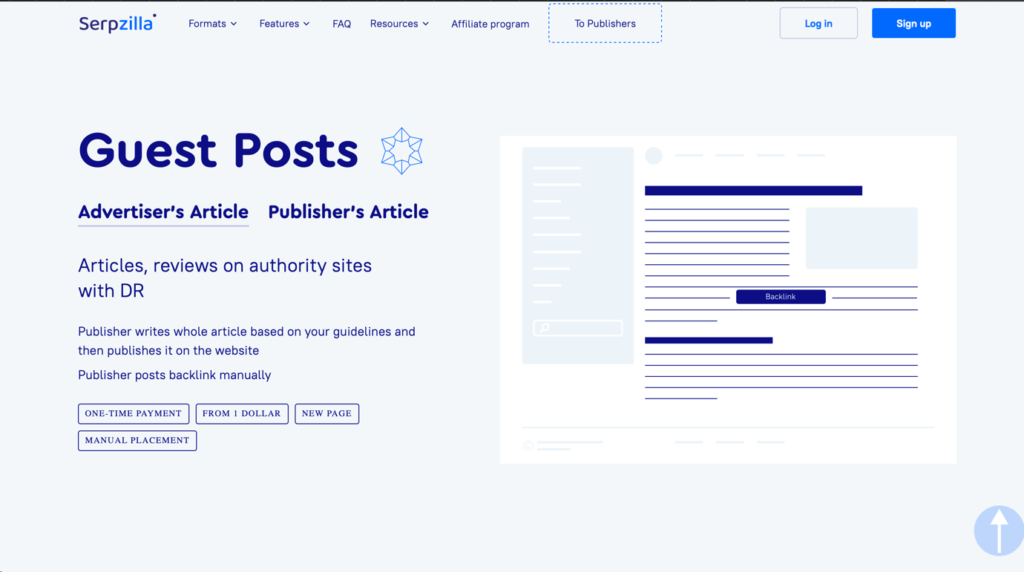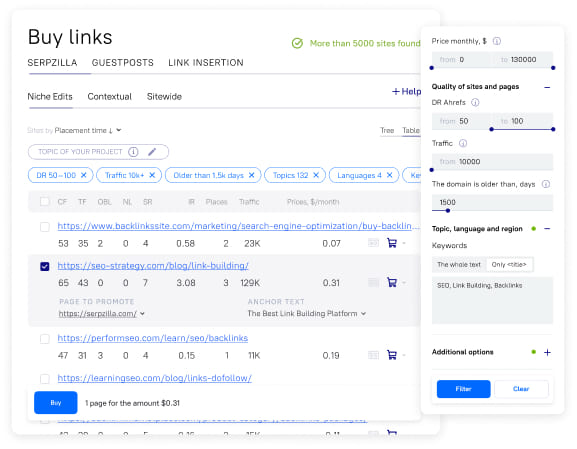What Is Guest Posting?
In the ever-advancing digital realm, where collaborations transcend borders, guest posting stands out as a practice of cooperative benefit and mutual knowledge sharing. This technique involves experts crafting articles for websites beyond their own, in turn sharing their expertise to a wider audience. Amid the vast array of strategies available for digital growth, guest posting found its roots in the early days of blogging, marked by the spirit of collaboration, shared audiences, and a passion for exchanging knowledge.
However, the impact of guest posting extends further into Search Engine Optimization (SEO) and digital marketing practices. In today’s digital ecosystem, backlinks influence a website’s search engine ranking. Hence, guest posting emerges as a tool for securing precious backlinks, operating in an ethical sense, rather than adopting the more standard practice of manipulating search rankings. Thus, guest posting stands as a content-driven method for promoting reciprocal relationships. The host site gains expert content for audience engagement, while the guest author secures a backlink, bolstering their website’s credibility for search engines.
Beyond SEO, guest posting also allows contributors to showcase expertise, provide alternative insights, and provide the audience with fresh content. As potential experts navigate the world of tech, they diversify portfolios and refine their craft, providing rich insights that may otherwise be missed without collaborative measures. Connections formed through guest posting may evolve into professional networks, facilitating professional collaborations beyond guest posting.
The Difference Between Guest Posting and Regular Blogging
But what are the differences between the two most distinct avenues for content dissemination: guest posting and regular blogging? Though they both involve the creation and publication of content into the online sphere, a closer examination reveals that these practices possess nuances that set them apart, each serving as a valuable tool for communication and engagement. We’ll explain a few of the differences below, allowing you to understand the effectiveness of guest posting more thoroughly.
Platform Ownership:
Guest Posting: The main purpose of guest posting lies in the ability to contribute content to a third-party website. In this scenario, an expert can step into the role of a guest, sharing your insights on a platform that belongs to another.
Regular Blogging: Alternatively, regular blogging involves the publication of articles on your own website or blog. In this case, you have full ownership, controlling the process of content creation, presentation, and its promotion.
Purpose & Objectives:
Guest Posting: This method predominantly serves the purpose of increasing outreach. Guest bloggers seek to tap into wider audiences, garner backlinks, and establish themselves as authoritative figures within their chosen area of expertise or industry.
Regular Blogging: While some objectives may overlap, regular blogging encompasses a twofold focus. It caters not only to existing viewership, but also emphasizes maintaining site SEO, nurturing the current audience, and providing a steady stream of innovative content.
Editorial Control:
Guest Posting: When engaging in guest posting, authors often encounter editorial processes on the host website. This might involve revisions and adherence to specific guidelines set by the hosting platform.
Regular Blogging: In the realm of regular blogging, you retain complete control over your content. This encompasses decisions regarding content style, formatting, and publication schedule.
Audience Interaction:
Guest Posting: Interaction through guest posting is primarily directed towards a new or unfamiliar audience. This offers a unique opportunity to leave a lasting impression and potentially amass new followers or customers, whilst also establishing yourself as an expert within this niche.
Regular Blogging: With regular blogging, on the other hand, content creation entails interaction with an audience that is already familiar with your content. This interaction occurs within a context where a relationship with readers has already been established and intends to be continued.
Longevity & Maintenance:
Guest Posting: Once a guest post goes live, updates can be limited and are usually based on the policies of the host site. Any future modifications are often subject to the host’s editorial decisions and guidelines, as agreed upon.
Regular Blogging: Regular blog posts provide you with the flexibility to frequently update, optimize, or even remove content as needed. This control ensures that your digital narrative remains both relevant and accurate.
In essence, while both guest posting and regular blogging have considerable power as separate content marketing strategies, they serve distinct purposes and require a nuanced approach. By recognizing the differences between these two methods, writers and marketers can be empowered to maximize the potential impact of their content. By tailoring their efforts to align with the specific strengths of each practice, creators can align to their digital footprint, fostering connections with audiences both old and new. As the digital landscape continues to evolve, the interaction between guest posting and regular blogging remains an essential cornerstone of effective content distribution and audience engagement.
Tips For Getting Started With Guest Posting
Setting out on a guest posting journey holds the promise of expanding your viewership and SEO ranking, yet it presents its own array of obstacles. To ensure a strong start, here are proven tips to steer you in the right direction.
- Research Your Target Blogs: Begin by finding blogs within your niche or industry that are open to guest contributions. Utilize tools like Serpzilla to find platforms that align with your area of expertise.
- Understand the Guidelines: Each blog has its own set of submission guidelines. Familiarize yourself with these rules before writing content, increasing your overall chances of acceptance.
- Craft High-Quality Content: Your guest post represents your own brand. Ensure its well-researched, comprehensively proofread, and provides genuine value to a new audience.
- Include a Compelling Bio: Most platforms allow a brief bio section from the author. Utilize this space to present yourself, showcase your expertise, and include a backlink to your website.
- Engage with the Audience: After your guest post is published, engage actively with comments and questions. Building rapport can lead to more opportunities and wider exposure.
- Promote Your Guest Post: Share your guest post with your own social media circle and blog newsletters to increase viewership and demonstrate your commitment to the guest posting process.
- Maintain Relationships: Consider guest posting a rapport-building opportunity, not a one-off transaction. Regular contributions can establish you as an authority in your chosen niche.
- Monitor Outcomes: Track the performance of your guest posts using analytics. Be clear on measuring traffic, backlink quality, and potential leads that stem from your post.
Remember, guest posting involves more than link building. It’s about building connections and providing value to a wider audience. Approach it with professionalism and a genuine desire to contribute to your area of expertise and success will follow.
Case Study Examples of Successful Guest Posts
Guest posting is akin to a specific marketing strategy, with the potential for substantial benefits for both guest writers and host blogs when executed with finesse. Within this context, let’s delve into illuminating instances of guest posts that have unequivocally excelled:
Gregory Ciotti’s Impact on Help Scout: Ciotti’s article delving into the psychology of colour in marketing resonated profoundly with a diverse readership, propelling the post into the realm of virality. This underscores the impact of well-researched, uniquely presented content.
Leo Widrich’s Insight on Search Engine Watch: Widrich’s contemplation of the importance of psychology in content marketing laid bare the power of immersive narratives in digital marketing endeavors.
Brian Dean’s Strategy on Backlinko: Brian Dean’s article, spanning numerous platforms and underpinned by his distinctive ‘Skyscraper Technique’ for high-value content, epitomizes a triumphant approach to guest posting.
Joel Klettke’s Contribution to ConversionXL: Klettke’s contribution on copywriting strategies provided readers with a comprehensive roadmap, cementing its status as a key resource in the sector. These guest posts serve as vivid demonstrations of the remarkable influence wielded by properly considering content placement.
These exemplary guest posts illustrate the profound impact of strategic content placement.
Selecting the Right Guest Posting Platforms
In the guest posting world, the pursuit of suitable platforms necessitates precision. Not just any site will suffice; the aim is to find platforms that align with your chosen niche, have engaged readers, and promise gains in visibility, authority, and traffic. Below, we delve into the methodology of identifying optimal platforms.
Serpzilla’s Guest Posting Platform: Empower your journey with Serpzilla’s Guest Posting Platform. Effortlessly pinpoint niche-aligned blogs, amplify authority, and unlock valuable guest posting opportunities.

Boost your SEO results! Link building has become fast and easy with Serpzilla. Buy quality backlinks on authority websites with high DR.

Niche-Focused Blogs: The first step is pinpointing prominent blogs within your niche. These platforms often have extensive readerships, established credibility, and a penchant for exceptional content.
Diverse Expert Websites: Websites encompassing multiple subject areas also hold potential. As long as they encompass a segment relevant to your expertise, a wide-ranging audience can be utilized.
Community Platforms: Platforms like Medium, LinkedIn Pulse, and Guestpost.com nurture environments where professionals share their insights. These avenues open doors to new audiences and establishing your voice in a chosen niche.
Leveraging Search Operators: A basic Google search using operators like “your niche + write for us” or “your niche + guest post guidelines” may unveil multiple platforms actively seeking contributors.
Harnessing Personal Networks: Networking, whether in virtual spaces or real-world interactions, offers access to guest posting opportunities. Engaging in conversations on LinkedIn or within industry forums exposes these potential avenues.
Top Websites and Blogs That Accept Guest Posts
Check out our selection of high-quality websites and blogs that accept guest posts. Choose a topic that suits your interests and goals.
Mistakes to Avoid in Guest Posting
The realm of guest posting offers a valuable strategy, but as with any strategy, potential pitfalls lurk. Here, we outline a catalogue of prevalent mistakes often encountered by writers and marketers, along with guidance on how to sidestep them:
- Neglecting the Guidelines of the Host Blog: Each blog boasts its distinct rules encompassing style preferences, content length, and alignment of thematic guidelines. Not paying attention to these directives can swiftly lead to rejection of your submission.
- Delivering Subpar Content: The hallmark of a guest post should be excellence and expertise. Permitting anything less than this to be published not only diminishes your standing but also fails the readers seeking substantive value from an expert standpoint.
- Deploying Generic Pitches: Employing a one-size-fits-all pitch tends to miss the point of reaching various audiences. Customization is key—craft pitches that resonate with the nuances of each blog, showcasing both your experience and research in a way that fully aligns with their readership.
- Excessive Promotion: While guest posts can serve as channels for marketing operations, the paramount objective remains in securing value. Drowning the narrative in overt promotions of products, services, or personal branding can overwhelm the audience.
- Neglecting SEO Principles: Even within the domain of third-party blogs, adherence to SEO principles holds sway. Infuse keywords organically, structure content with apt headings, and optimize for search engines to ensure discoverability.
- Neglecting Reader Engagement: Neglecting to respond to readers’ comments signifies a missed opportunity. Akin to extending a virtual handshake, this engagement fosters a bond with the audience and can potentially garner future prospects.
- Neglecting Cross-Promotion: Upon your guest post’s publication, leveraging your own digital channels for cross-promotion—audio on social media, newsletters, and website—brings in amplified traffic and bolsters the credibility of both you and the hosting blog.
- Foregoing Analytical Scrutiny: Positive insights from post-performance analytics proves pivotal. Ascertain resonant topics, gauge the efficacy of calls-to-action, and discern traffic dynamics, equipping you with knowledge to fine-tune future guest posts.
At its core, guest posting epitomizes reciprocity. Hosting blogs are enriched with quality content, while you reap the rewards of heightened visibility and a position of authority in your area of expertise. Mindful avoidance of these entrenched missteps ensures an optimal result throughout the collaborative process.









